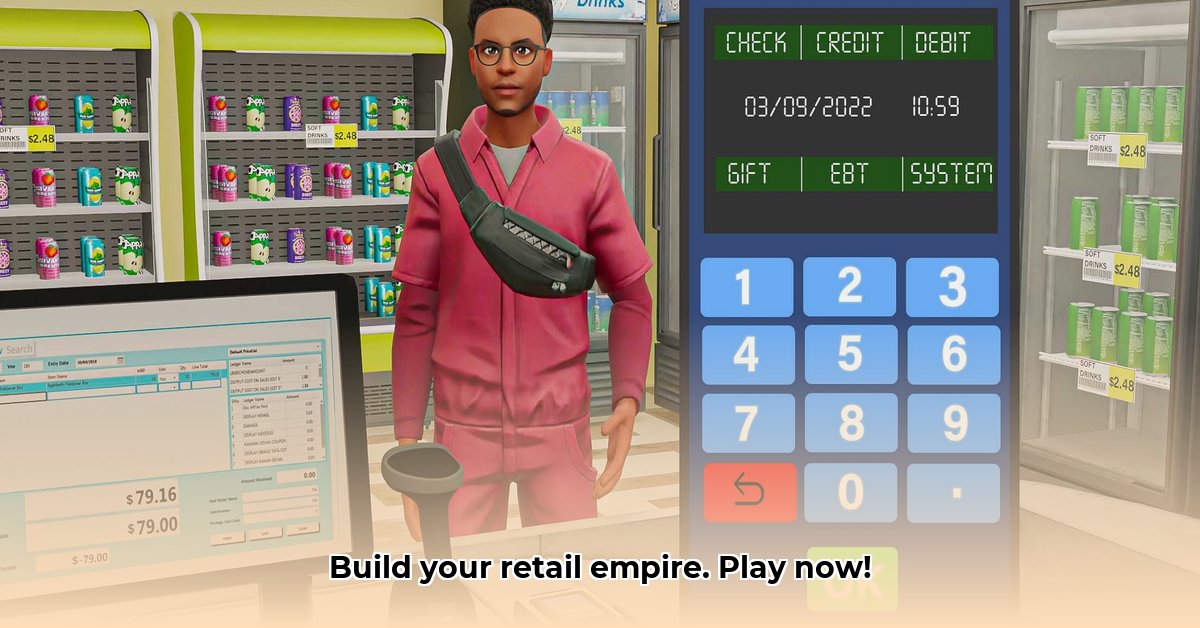
Understanding the Virtual Grocery Landscape
Online supermarket simulator games offer a compelling blend of entertainment and education, allowing players to experience the complexities of running a successful grocery business. These simulations aren't merely casual games; they demand strategic decision-making, resource management, and a keen understanding of market dynamics. They provide a realistic, low-risk environment to hone business skills applicable to real-world retail scenarios. How effectively can you balance inventory, customer satisfaction, and expansion to build a virtual supermarket empire?
Gameplay Mechanics: From Stocking Shelves to Strategic Expansion
The core gameplay loop typically involves managing inventory, satisfying customer demands, and strategically expanding the business. Popular titles like "Supermarket Simulator" and "Supermarket Simulator: Store Manager" illustrate diverse approaches to this core concept. Some games emphasize the day-to-day operations, focusing on efficient customer service and inventory control. Others adopt a broader, managerial perspective, allowing players to make high-level decisions regarding expansion, marketing, and long-term strategic planning. This range of complexity caters to diverse player preferences, from those seeking a micro-management experience to those focusing on macro-level strategic decisions.
Key Success Factors: Mastering the Art of Retail
Several key mechanics significantly impact a player's success. Efficient inventory management is paramount; overstocking leads to wasted resources, while understocking results in lost sales and dissatisfied customers. The optimal balance requires careful forecasting and a deep understanding of demand patterns. Customer service plays a crucial role; happy customers drive return business, while negative experiences can quickly damage reputation and sales. Strategic store layout optimizes workflow and customer experience, impacting both operational efficiency and sales figures. One study suggests that optimized store layouts can increase revenue by as much as 15%. Finally, effective staff management is critical; hiring, training, and motivating employees are essential to ensuring smooth operations and high performance.
Navigating the Challenges and Opportunities
The dynamic nature of the supermarket simulator market presents ongoing challenges and opportunities. Developers continuously strive for innovation to retain player interest, introducing new features and mechanics to keep the experience fresh and engaging. The challenge for players lies in mastering complex systems, adapting to unpredictable market fluctuations, and consistently optimizing their strategies.
Stakeholder Analysis: A Multifaceted Ecosystem
The online supermarket simulator ecosystem involves several key stakeholders, each with distinct goals and objectives:
| Stakeholder | Immediate Goals | Long-Term Aspirations |
|---|---|---|
| Game Developers | Create engaging gameplay, positive player reviews | Expand game features, potentially adding multiplayer modes |
| Players | Learn business skills, improve management abilities | Build and expand their virtual supermarket empires |
| Educators/Trainers | Use the game as a realistic training tool | Integrate game mechanics into retail management courses |
| Investors/Publishers | Product success and ROI | Long-term sustainable game profits and expansion |
Risk Assessment and Regulatory Considerations
While current supermarket simulator games generally avoid significant regulatory hurdles, future innovations may necessitate careful consideration of data privacy and consumer protection laws, particularly with the addition of multiplayer elements or in-game purchases. For developers, negative player feedback and lack of innovation represent substantial risks, demanding continuous monitoring and adaptation to maintain positive player engagement.
Risk Management Matrix: Mitigating Potential Setbacks
Successful long-term play requires proactive risk management. Key risks and mitigation strategies are outlined below:
| Risk Factor | Mitigation Strategy | Impact Level | Probability | Risk Score |
|---|---|---|---|---|
| Customer dissatisfaction (pricing) | Monitor customer feedback; adjust pricing accordingly. | High | Medium | High |
| Self-checkout malfunction | Have backup checkout methods readily available | Medium | Low | Low |
| Unforeseen staffing issues | Cross-train employees; over-hire slightly initially | Medium | Medium | Medium |
| Inventory mismanagement | Implement robust inventory tracking and management systems | High | High | Very High |
| Improper Store Expansion | Stage expansions to ensure sufficient funding and resource availability | High | Medium | High |
Building a Sustainable Virtual Empire: Actionable Strategies
To build a thriving virtual supermarket, players must adopt a multi-faceted approach focusing on efficient inventory management, strategic pricing, effective staff management, and proactive risk mitigation.
- Master Inventory Management: Maintain optimal stock levels by accurately forecasting demand, utilizing robust tracking systems, and prioritizing storage upgrades.
- Strategic Pricing: Employ data-driven pricing strategies, adjusting prices based on demand and competitor analysis. A starting point could be adding a small margin to the market price.
- Effective Staff Management: Hire and train staff strategically, ensuring adequate coverage during peak hours and proactively addressing staffing shortages.
- Proactive Risk Mitigation: Implement contingency plans to address potential issues, such as self-checkout malfunctions or unexpected supply chain disruptions.
The world of online supermarket simulators provides a unique opportunity to learn valuable business skills in a fun and engaging environment. By mastering the core mechanics and adopting a forward-thinking approach, players can build successful virtual empires and gain valuable insights into the complexities of retail management.
⭐⭐⭐⭐☆ (4.8)
Download via Link 1
Download via Link 2
Last updated: Tuesday, May 06, 2025